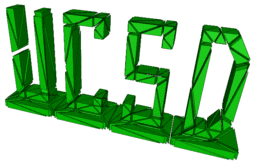| Michael Holst | ||
| https://ccom.ucsd.edu/~mholst/ |
Distinguished Professor of Mathematics and Physics UC San Diego |
|
|
Math 170C (Introduction to Numerical Analyis: ODEs)
Course Topics: Introduction to Numerical Analysis: Ordinary Differential Equations Instructor: Prof. Michael Holst (5739 AP&M, mholst@math.ucsd.edu; Office Hours: MW 1-2pm) Term: Spring 2010 Lecture: 11:00a-11:50a MWF, AP&M B412 TA: Jonny Serencsa (5720 AP&M, jserencs@math.ucsd.edu; Office Hours: See the TA) Discussion: See the TA Main Class Webpage: http://ccom.ucsd.edu/~mholst/teaching/ucsd/170c_s10/index.html Textbook(s): Numerical Analysis, by D. Kincaid and W. Cheney. Printable Syllabus: Can be found [ here ]. CATALOG DESCRIPTION: 170C. INTRODUCTION TO NUMERICAL ANALYSIS: ORDINARY DIFFERENTIAL EQUATIONS (4) Numerical differentiation and integration. Ordinary differential equations and their numerical solution. Basic existence and stability theory. Difference equations. Boundary value problems. Three lectures, one recitation. Prerequisite: Math. 170B and Math. 20D or consent of instructor. COURSE INFORMATION: Many of the advances of modern science have been made possible only through the sophisticated use of computer modeling. The mathematical foundation of the computer modeling techniques now used in all areas of mathematics, engineering, and science is known as numerical analysis. The Math 170ABC series at UCSD provides an introduction to the exciting field of numerical analysis, which is also sometimes referred to as computational mathematics or scientific computing. Professor Holst has a passion for this particular area of mathematics, and much of his published research is in this area. Math 170C deals primarily with the numerical solution of ordinary differential equations (ODEs). In 170C we will also study related numerical techniques for approximating the derivatives and integrals of functions in a stable and accurate way. Previous quarters dealt with numerical linear algebra (170A) and nonlinear equations and numerical approximation theory (170B), and we will have occasion to use these ideas to develop new techniques in 170C. The textbook for the course will be as listed above. GRADES, HOMEWORKS, EXAMS, AND IMPORTANT DATES: Course information, such as homework assignments, due dates, and exam dates, will be maintained on the class webpage. Note that I sometimes make minor changes to the homework assignments as the quarter progresses, based on how much I am able to cover in the lectures. Therefore, CHECK THE WEBPAGE FREQUENTLY. The course will be graded on the homework assignments, two midterm examinations and a final examination, according to the following guidelines:
There will be five homework assignments throughout the quarter. The first midterm will be based on homeworks 1 and 2, and the second midterm will be based on homeworks 3 and 4. The final will be cummulative and based on homeworks 1-4, as well as a small amount of new material from homework 5. The following policies regarding homeworks and exams will be applied:
LECTURES: The lectures will follow the textbook quite closely; in particular, we will cover Chapters 7 and 8, in that order. (Chapters 2, 4, and 5 were covered in 170A, and Chapters 3 and 6 were covered in 170B. Chapter 10 is covered in 171AB, and Chapter 9 is covered in 175.) Polynomial interpolation (Chapter 6, covered in 170B) will be reviewed briefly in 170C due the central role it plays in numerical differential equations. Homework assignments will be a combination of theoretical and computer problems; this will require some computer programming using MATLAB. The TA will be able to assist you in accessing your computer accounts as well as MATLAB.
HOMEWORKS ASSIGNMENTS: The following are the five homework assignments: Homework 1 (due week 3 in TA section on Monday April 12; Problems covering 6.1-6.2, 7.1-7.2):
Homework 2 (due week 4 at end of day on Wednesday April 21; Problems covering 7.2-7.4):
Homework 3 (due week 6 at end of day on Wednesday May 5; Problems covering 8.1-8.3):
Homework 4 (due week 8 at end of day on Wednesdy May 19; Problems covering 8.4-8.6):
Homework 5 (due week 10 at end of day on Wednesday June 2; Problems covering 8.7-8.10):
Extra Credit Homework (NORWEGIAN EXCHANGE STUDENTS ONLY -- DOES NOT COUNT TOWARDS GRADE IN THE CLASS):
|
